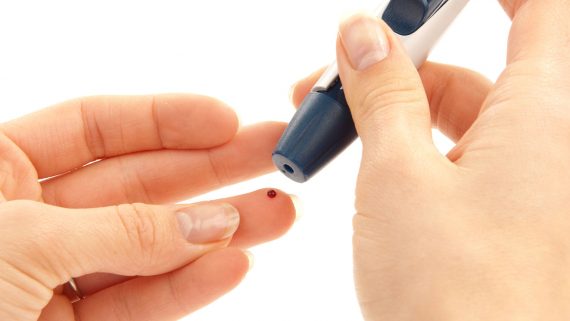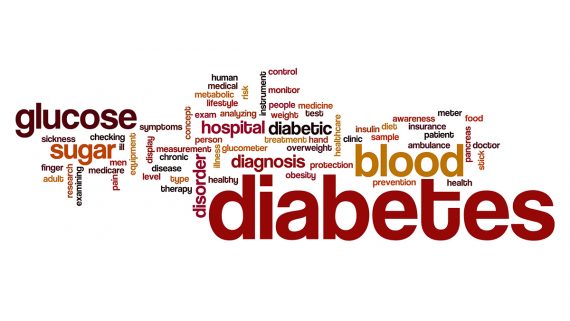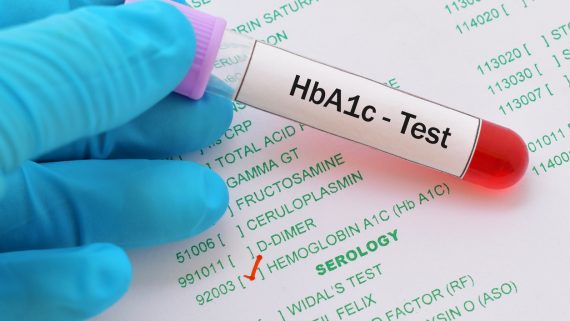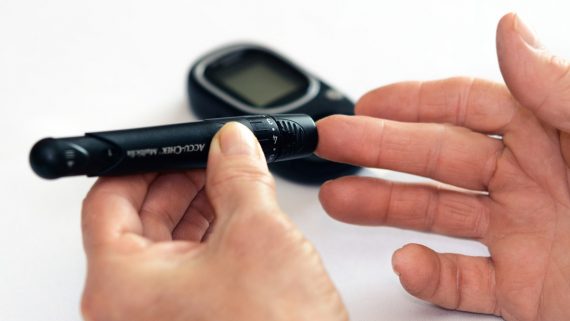There are various possible causes of a high blood sugar level in the morning:
- The Dawn Phenomenon which is a natural rise in blood sugar due to a surge of hormones secreted at night which trigger your liver to dump sugar into your blood to help prepare you for the day.
- Having high blood sugar from the night before which continue through the night into the morning.
- Reactive hyperglycemia which is also called the Somogyi Effect. This is when low blood sugar in the middle of the night triggers your liver to dump sugar into your blood in an attempt to stabilize your blood sugar.
Why Are My Blood Sugars High in the Morning?

There is a simple strategy for diagnosing the source of high blood sugars in the morning.
- Test your blood sugar before bed.
- Test your blood sugar in the middle of
Food and mood – does age make a difference?
We all need a bit of a change in our food as we get older – a switch in nutrient needs to meet the change in metabolism.
But, differences in the actual food we eat can also impact our mental status as we age too. For example, with the winter months being colder, it has bearing on how we feel as well. So, if the intake of some food versus others can help mentally, as well as for our age, we get a double beneficial impact. Bring in the known fact that food and mental health weigh on blood glucose (BG) control too, and it makes sense to consider food type and what we should focus on for our age.
In a study published in Nutritional Neuroscience, the researchers found that younger people age 18-29 did much better eating meat or foods higher in protein value, which helps increase serotonin levels. This can help them feel less distress and overall aid with success in school, job, and health. For those who are older than 30 years of age, it was found that avoiding foods that are more of a stimulant, such as caffeinated coffee and higher glycemic/sugary foods, was beneficial. These foods seem to impact mood in a negative manner due to having less nutritiona
Years ago, it was rare to hear about a child with type 2 diabetes. Doctors used to think kids only got type 1. It was even called juvenile diabetes for a long time.
Not anymore. Now, according to the CDC, more than 208,000 people younger than 20 have this disease. That number includes both type 1 and type 2 diabetes.
Here’s what you need to know if your child is diagnosed.
What Is Type 2 Diabetes?
You’ve probably heard diabetes and high blood sugar mentioned together. Here’s what happens. Your digestive system breaks down carbohydrates into a type of sugar called glucose. Your pancreas creates a hormone, known as insulin, that moves glucose from your blood into your cells, where it’s used for fuel.
In type 2 diabetes, the cells in your child’s body don’t respond to the insulin, and glucose builds up in her bloodstream. This is called insulin resistance. Eventually, the sugar levels in her body get too high for it to handle. That could lead to other conditions in the future, like heart disease, blindness, and kidney failure.
Wh
There are many myths about diabetes which can make separating fact from fiction difficult. To cut through the confusion, we’ve broken down some of the common misconceptions:
Myth- Diabetes is not serious
Fact – There is no such thing as “mild” diabetes. All types of diabetes are serious and can lead to complications if not well managed. Diabetes can affect the quality of life and can reduce life expectancy.
Myth- All types of diabetes are the same
Fact – There are a number of types of diabetes. The most common are type 1, type 2 and gestational diabetes Other forms of diabetes are less common. Each type of diabetes has different causes and may be managed in different ways but once someone has any type of diabetes except gestational diabetes, it needs to be managed every day. Gestational diabetes goes away after pregnancy, however, it does significantly increase someone’s risk of developing type 2 diabetes later in life. All types of diabetes are complex and serious.
Myth – Diabetes can be prevented
Fact
• Depression is a very real condition and is becoming increasingly common in the general population; approximately one in four people will experience depression sometime in their adult life. For people who live with diabetes, this figure is even higher.
• Up to 50% of people with diabetes are thought to also have a mental illness such as depression or anxiety.
• People with depression and diabetes may find it hard to maintain daily diabetes care
What is Depression?
Depression is not just low mood but a serious illness. People with depression find it hard to do normal activities and function from day to day. Depression has serious effects on physical as well as mental health.
Link between diabetes and depression
Research shows that having diabetes more than doubles the risk of developing depression. Living with a chronic condition like diabetes, coping with biological and hormonal factors plus needing to manage the condition on a daily basis may increase the risk of depression.
Depression can increase the likelihood of developing diabetes complications. People with depression may find it harder to
According to the World Health Organization (WHO), India had 69.2 million people living with diabetes in 2015 and nearly 98 million people in India may have type 2 diabetes by 2030. When it comes to diabetes, people are usually unaware of its causes and symptoms or have misconceptions and confusions of the same. Our diabetologist Dr. Paresh Ved and our in-house dietician have compiled this complete Diabetes Care Guide to clear all your doubts and provide some do’s and don’ts for all diabetics.
Diabetes Basics:
What is Diabetes?
What is prediabetes?
Diabetes and Blood Glucose
Type 1 Diabetes
Type 2 Diabetes
FAQs about diabetes
Prediabetes means you have blood glucose, or blood sugar, levels that are higher than normal but not high enough to be called diabetes. Glucose comes from the foods you eat. Too much glucose in your blood can damage your body over time. If you have prediabetes, you are more likely to develop type 2 diabetes, heart disease, and stroke.
Most people with prediabetes don’t have any symptoms. Your doctor can use an A1C test or another blood test to find out if your blood glucose levels are higher than normal. If you are 45 years old or older, your doctor may recommend that you be tested for prediabetes, especially if you are overweight. Losing weight – at least 5 to 10 percent of your starting weight – can prevent or delay diabetes or even reverse prediabetes. That’s 10 to 20 pounds for someone who weighs 200 pounds. You can lose weight by cutting down on the amount of calories and fat you eat and being physically active at least 30 minutes a day. Being physically active makes your body’s insulin work better. Your doctor may also prescribe medicine to help control the amount of glucose in your blood.
Symptoms of Prediabetes:
Prediabetes usually doesn’t cause any symptoms. The only way to know you have it is if your blood sugar levels are
What does HbA1c mean?
HbA1c is what’s known as glycated haemoglobin. This is something that’s made when the glucose (sugar) in your body sticks to your red blood cells. Your body can’t use the sugar properly, so more of it sticks to your blood cells and builds up in your blood. Red blood cells are active for around 2-3 months, which is why the reading is taken quarterly.
Too much sugar in the blood damages your blood vessels. This damage can lead to serious problems in parts of your body like your eyes and feet.
What is HbA1c?
HbA1c is your average blood glucose (sugar) levels for the last two to three months.
A high HbA1c means you have too much sugar in your blood. This means you’re more likely to develop diabetes complications, like serious problems with your eyes and feet.
Knowing your HbA1c level and what you can do to lower it will help you reduce your risk of devastating complications. This means getting your HbA1c checked regularly.
You’re entitled to get this test at least once a year. But if your HbA1c is high or needs a little more attention, it’ll be done every three to six months. Don’t skip it.
Once you know your HbA1c
The most common and confusing factors related to blood sugar levels is the normal, prediabetic and diabetic values. The fasting blood sugar/glucose levels are said to be normal if it is below 100mg/dl. Fasting blood sugar levels greater than 126mg/dl refers to Diabetes. Many people are confused regarding the values of the transitory phase. Between 101 to 125mg/dl it is known as impaired fasting glucose. Other than fasting blood sugar levels, Postprandial (after meal) sugar levels are also a key unit in monitoring blood glucose levels. If your postprandial blood sugar levels are less than 140mg/dl it is considered to be normal, if it is between 141 to 199mg/dl it indicates impaired glucose tolerance. Postprandial blood glucose levels more than 200mg/dl are a clear cut indication of Diabetes Mellitus. Now, both impaired fasting glucose and impaired glucose tolerance are together known as Prediabetes. That is these values indicate the prediabetic stage. During Pregnancy, it is desirable for women to keep their fasting sugar levels between 60 – 90mg/dl and Post Prandial levels between 90-120 mg/dl.
Blood Sugar level monitoring –
Blood glucose/ blood sugar level monitoring is critical to guide insulin, medication and behavioural adjustments with regards to
Gestational Diabetes is high Blood Sugar that develops during pregnancy and usually disappears after giving birth. Diabetes in pregnancy includes pregnancy in both pre-existing Diabetes (pregestational diabetes) and gestational diabetes mellitus (GDM), which is diagnosed in pregnancy. Both situations are associated with maternal and foetal complications if not treated adequately. GDM is a severe and neglected threat to maternal child health. Poor maternal glucose control during the first eight weeks of pregnancy with subsequent hyperglycaemias and lipid peroxidation can have severe implications for the foetus, including birth defects.
Causes of Gestational Diabetes –
During pregnancy, the placenta makes hormones that can lead to a buildup of glucose in your blood. Usually, your pancreas can make enough insulin to handle that. If not, your blood sugar levels will rise and can cause gestational diabetes.
• Were overweight before you got pregnant
• Are African-American, Asian, Hispanic, or Native American
• Have high blood sugar levels, but not high enough to be diabetes
• Have a family history of diabetes
• Have had gestational diabetes before
• Have high blood pressure or










